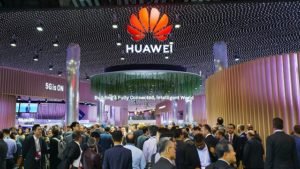Huawei Technologies said it generated revenue of CNY142.7 billion from Carrier business, CNY54.7 billion from Enterprise, and CNY101.3 billion from Device business in H1 2022.

Huawei said revenue from device business slumped by more than a quarter to 101.3 billion yuan. Its carrier and enterprise businesses both saw growth. Huawei did not reveal the specific growth in Carrier business and Enterprise business.
Huawei reported 5.9 percent drop in total revenue during the first half of 2022 to 301.6 billion yuan ($44.73 billion), with a sharper decline during January-March.
Profit of Huawei Technologies has more than halved to 15.08 billion yuan in H1 2022 from 31.39 billion yuan in the first half of 2021, Reuters news report said.
Huawei said on Friday its first-half net profit more than halved as a difficult economy curtailed demand from customers, compounding woes brought by U.S. technology restrictions.
“While our device business was heavily impacted, our ICT infrastructure business (enterprise unit) maintained steady growth,” said Ken Hu, Huawei’s rotating chairman.
The Chinese technology firm’s profit margin narrowed to 5 percent.
A weak economy, COVID-19 disruptions and supply chain challenges hurt the company’s device business that sells smartphones and laptops, a company spokesperson said.
Huawei also boosted investment into new technology and businesses, which impacted profit.
Second-quarter sales in the wider Chinese smartphone industry fell 14.2 percent year-on-year, while volumes hit a decade low, Counterpoint Research said last month.
The United States placed Huawei, the # telecom network maker in the world, on an export blacklist in 2019 that barred it from accessing critical technology of U.S. origin, hurting its ability to design chips and source components from outside vendors. The ban devastated the company’s once dominant handset business.
Huawei is building new business lines, including smart car components and energy efficiency systems, with its cloud services business, taking 18 percent of China’s growing market, according to consultancy Canalys.
Huawei has also rolled out its own proprietary Harmony operating system, which is now being used on 300 million Huawei devices.
